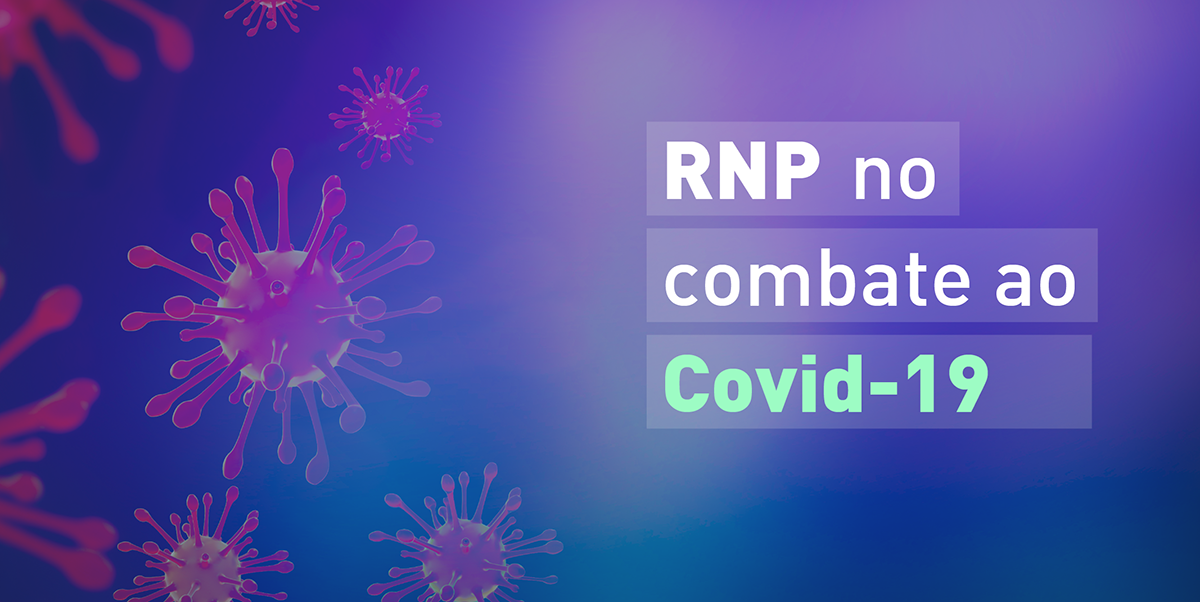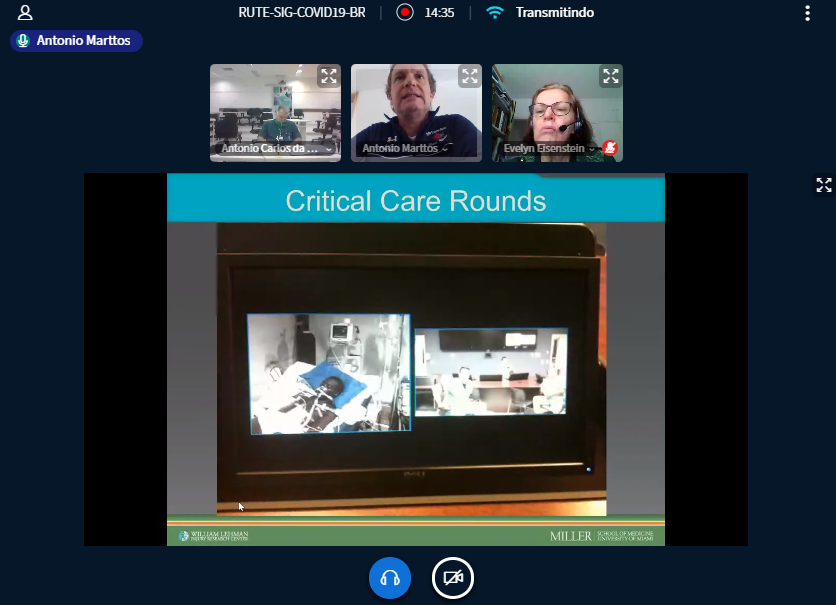SIG Covid-19 Brazil session discusses the importance of telemedicine to face the pandemic
The sixth session of RUTE´s SIG Covid-19 was held this Friday (4/3), there was an international guest to talk about the topic “The Reach of Telemedicine in the middle of the Covid-19 pandemic”. Prof. Dr. Antonio Marttos from University of Miami, who lives in the USA for more than 15 years, approached the importance of the use of the virtual tool as a way to exchange of knowledge, information and experience in this moment of combat to the pandemic. There were 105 participants in the virtual meeting.
Successful telemedicine cases
The presentation was started with a list of some examples of successful use of telemedicine, as in evaluation and treatment of athletes during the Pan-American Games in Guadalajara in 2011, the London Olympics in 2012, the tragedy in Kiss nightclub in Santa Maria (RS) in 2013, and in the simulation of biological contamination before the realization of the Rio de Janeiro Olympics in 2016. “The day after the fire in Santa Maria, we held several meetings via videoconference with first collaboration and presence of the Minister of Health at that time. Before the Olympics in Rio, we made many simulations with the Defense Department related to biological contamination. This is a great legacy. Nowadays, I assure you that the Armed Forces are well trained and can help us a lot in the response of the situation we are facing”, Dr. Antonio affirmed.
He showed the creation of the “Global response to Covid-19” composed by professionals from China, where the pandemic surged, and from many other nationalities. The collaboration network holds meetings to exchange experience and data that help the countries to prepare for the virus. For the Professor from University of Miami, the crisis lived nowadays reinforces that telemedicine must be recognized as essential, not just for treatment of diseases and facing epidemics, but for the entire health sector, at all times.
“Telemedicine is a great tool. What is on the table now is not the best material, the best equipment. Today, we can use remote monitoring of critical patients at home. We all learnt. When the telemedicine ordinance was issued last year in Brazil, there was a lot of resistance by the doctors. Now, we learnt that if well used, the tool can help us a lot. A tool that will not take anybody’s job. It will help to use adequate equipment, spreading knowledge and, mainly, it can help to save lives. Now it is time to show to the country how telemedicine can be used in the right, professional way. For the doctors, health system, government. It can help not just in times of crisis, but after that as well”, Marttos pointed out, alerting also about the seriousness and the need of standards tele-appointment shall follow.
“The first thing that I say in any lecture: videoconference is not telemedicine. For having an appointment, I need a software, in which I can document, see previous history, enter exam image, keep everything documented. Telemedicine and tele-appointment hall be recorded, documented, there shall be a record of what shall be done. It can not be done by video call on WhatsApp or Facetime.”
Panorama in Florida
Finally, Dr. Antonio Marttos commented about the situation Florida is currently living in relation to the new coronavirus and gave a lesson that has been globally spread.
“Here in Florida the number of new cases is decreasing, but the number of serious cases is increasing, which is natural. The curves work like that. We think it is going to be the fifth state with the highest number of cases in the USA. Thankfully, the subway is not used very much here as in New York. We must try social isolation to flatten the curve and transform it as the Influenza curve is nowadays. In the world, they are speaking about that: those who can concentrate the lighter cases isolated to avoid the dissemination and keep the more serious cases in hospitals, can manage to control and not overload the health system, having better results”, he explained.
Session on 4/1 discussed radiologic findings in the disease diagnosis
The radiologist Dr. Rafael Grando from the team of Hospital Moinhos de Vento (HMV) in Porto Alegre (RS), showed a collection of radiological images that identify a patient as a bearer of the new coronavirus in the SIG Covid-19 meeting last Wednesday (4/1). There were 74 participants in this edition, doctors and researchers, including a specialist from Spain – a country, which faces one of the highest incidences of the disease in the world panorama.
The specialist in thoracic radiology explained the different aspects of Covid-19 and presented the ethological agent (Cov-2) of the disease, a virus, which is 70% genetically similar to the virus that causes SARS, but which, visible under electronic microscope, has a surface surrounded by spicules that resemble crowns – here is where the name coronavirus comes from. He also pointed out forms of infection: from person to person; by respiratory way; through infected objects or surfaces and contact with eyes, nose and mouth.
Grando affirmed that even if we take in mind the sub-notification of the case records, prevalence increases daily since the record of the first cases in the state at the end of February. He told that, for being an associate of Johns Hopkins Hospital, HMV receives the institution´s bulletin daily with update of the number of diagnoses, deaths, and releases related to Covid-19. Currently, the hospital has an external tent assembled next to the emergency area of the hospital, in order to avoid the patients received with acute respiratory syndrome to stay close to those, who enter for other reasons.
The SIG Covid-19 Brazil sessions are held on Mondays, Wednesdays and Fridays, from 12 PM to 1 PM. The meetings are destined to doctors and researchers from the health area.
To follow the program up and obtain further information about the group, click HERE.

